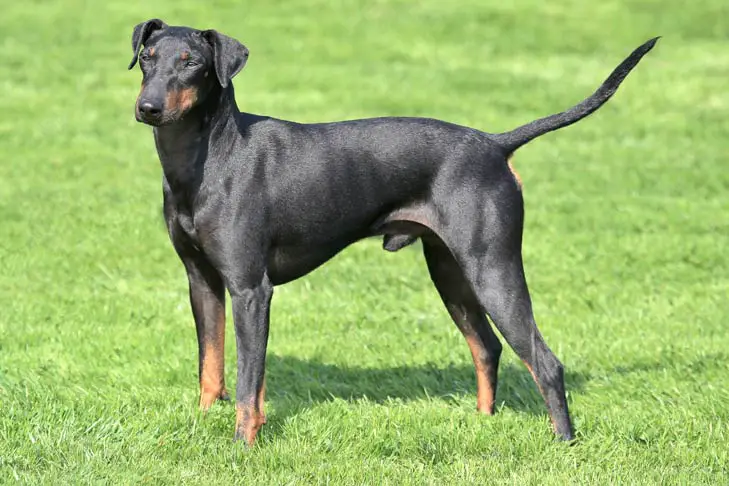The Manchester Terrier gets its name from the English city where it was developed. Manchesters are lively, bright, and athletic dogs with the ratting instinct of a terrier and the beautiful curves of a coursing hound. They have the sleek grace of a coursing hound and the fearless instincts of a rat terrier. These racy dogs are available in two sizes: standard (no more than 22 pounds) and toy (no more than 12 pounds). Despite differences in size, all Manchesters have a similar temperament, body type, and athletic ability. A tight coat of rich mahogany tan and jet black distinguishes them. The head is long and wedge-shaped, with tan patches above each eye indicating a wary look. Manchesters are fast and have good reach.
Manchester Terrier (Standard)
Average sizes and life
expectancy of the breed.
Height
15-16 inches
Weight
12-22 pounds
Life Expectancy
15-17 years
Breed Traits & Characteristics
About the Breed

Owning a dog is not just a privilege; it’s a responsibility. They depend on us for, at minimum, food and shelter, and deserve much more. When you take a dog into your life, you need to understand the commitment that dog ownership entails.
 Health
Health
Recommended Health Tests From the National Breed Club:
- Ophthalmologist Evaluation
- Thyroid Evaluation
- Von Willebrand's Disease DNA Test
- Cardiac Exam
 Grooming
Grooming
 Exercise
Exercise
 Training
Training
 Nutrition
Nutrition
History
Long before it was famous for its soccer team, Manchester was a center of England’s thriving textile trade. Local mill employees’ favorite activities in the mid-1800s were rabbit hunting with small hounds and rat killing (releasing a terrier into a rat pit and wagering on the outcome). Breeders worked hard to create a dog that could succeed at both. They crossed a popular terrier known as the Black and Tan Terrier with Whippets, producing a distinct Manchester terrier.
The Standard Manchester and Toy Manchester were registered as different breeds until 1959, however, interbreeding was permitted. Since then, the two breeds have merged to become the Manchester Terrier, which comes in two sizes: toy and standard.




